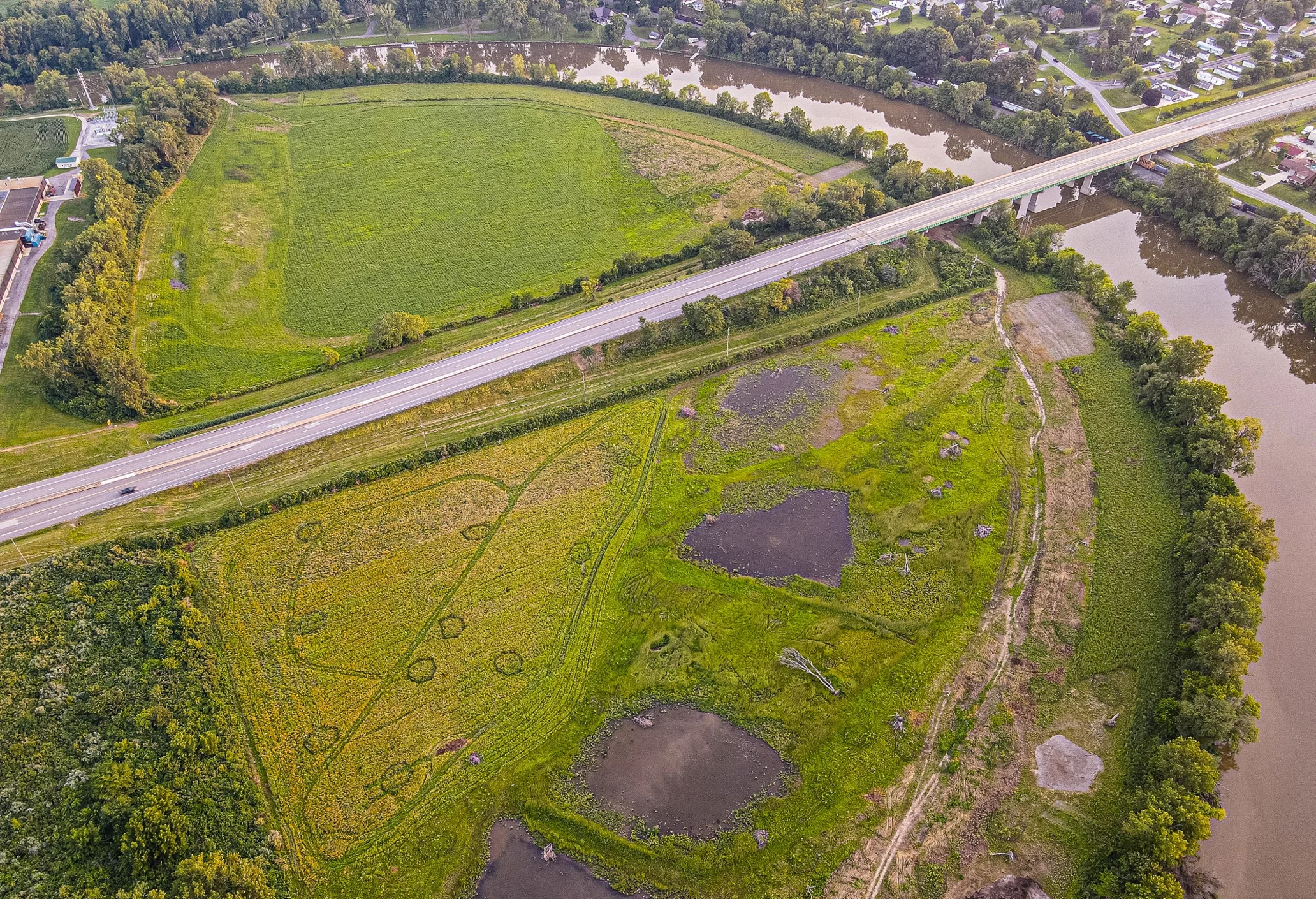Protecting drinking water through restoration
“It takes a new skillset. You need all the science knowledge that a land trust has, but also a new kind of knowledge.” — ROB KRAIN, Black Swamp Conservancy

The following case study appears in “Taking the Plunge: Guidance and Inspiration to Help Land Trusts Protect and Restore Water Quality.” Download the complete guide here.
The Great Black Swamp was a vast network of wetlands in northwest Ohio, northeast Indiana and part of Michigan that was drained and settled in the second half of the 19th century. It is now highly productive farmland. A consequence of this agricultural productivity is nutrient pollution, a primary contributor to algal blooms in Lake Erie. A massive algal bloom in 2014 produced dangerous toxins in the water supply of Toledo, Ohio. Half a million people were warned not to drink — or even touch — the water coming out of their taps.
“We had started doing habitat restoration work to reduce the amount of nutrient runoff from entering the waterways about a year prior to that,” says Executive Director Rob Krain. “But that was the event that really started us on our current path.”
Black Swamp Conservancy was formed in 1993 to protect and preserve natural and agricultural lands in northwest Ohio for the benefit of future generations. With a staff of five and a dedicated board, the accredited organization employs two key strategies to accomplish this mission: holding conservation easements and acquiring land to own and manage as nature preserves. These strategies have proven to be highly successful in protecting land in northwest Ohio. However, in the early 2000s Conservancy staff and board grew aware that protection didn’t end at acquisition and they recognized the importance of identifying and acquiring high priority parcels for the purpose of restoring natural habitats — such as wetlands — to protect soil health and improve water quality by reducing nutrient loading and sediment deposition downstream. By the time of the Toledo algal bloom, the Conservancy had already started to shift its focus toward restoration work in addition to land protection and was, therefore, positioned to engage on water quality issues.
Krain described the challenge of learning how to take the additional step of addressing nutrient problems through restoration. For instance, it is difficult to capture and filter runoff in engineered landscapes that have been drained for agriculture through field tiles, which often go under field buffers and filter strips that would otherwise intercept stormwater flowing from the field. Addressing situations like this one requires more complicated and larger-scale restoration, such as re-establishing wetlands in low-lying areas on unproductive farmlands. Managing contractors for larger-scale restoration projects can be difficult for a small land trust like Black Swamp Conservancy, although having a staff member or partner with an engineering or consulting firm background is often helpful.
Despite the associated challenges, the Conservancy’s restoration projects created immense habitat benefits: “It’s amazing to see how quickly species come in and adapt and use these places.” But as with other land trusts, a major challenge for the Conservancy was quantifying the water quality impacts of their work. How can work on one parcel have any impact on a watershed the size of Lake Erie?
“It’s a drop in the bucket,” says Krain.
The Conservancy partnered with Kent State University to conduct edge-of-field testing and research on its first major restoration project to see how much nutrient runoff was reduced as a result of the restoration work. This research showed a 40 percent reduction in nitrogen and phosphorus leaving the subject fields. The Lake Erie & Aquatic Research Network, a collaborative of 20 Ohio universities and other institutions, is evaluating subsequent projects.
Having this information about the benefits of restoration proved to be critical for leveraging funding to support the Conservancy’s work. In 2019, the State of Ohio launched H2Ohio, a comprehensive water quality initiative to strategically address the state’s serious water issues. Program targets included reducing phosphorous runoff from farms by using proven, science-based nutrient management best practices and the creation of phosphorous filtering wetlands. The Ohio General Assembly allocated $172 million for 2020–2021. The state and partners identified cost-efficient practices to address runoff, many of which focus on land protection and restoration.
The adage “luck is when preparation meets opportunity” definitely applies here. Black Swamp Conservancy was both lucky and prepared when it was awarded funding for four restoration projects in the first year of the H2Ohio program. The Conservancy’s restoration work continued with another four projects in the second year of the program. Readiness is key to taking advantage of opportunities when they arise.